For every dollar printed in america private administrators must be paid a per centage.
Eustace Clarence Mullins, Jr. (March 9, 1923 – February 2, 2010) was a populist American political writer, biographer, and antisemite.Antisemitism (also spelled anti-semitism or anti-Semitism) is suspicion of, hatred toward, or discrimination against Jews for reasons connected to their Jewish heritage. Social scientists consider it a form of racism. In a 2005 U.S. governmental report, antisemitism is defined as "hatred toward Jews—individually and as a group—that can be attributed to the Jewish religion and/or ethnicity."
(March 9, 1923 – February 2, 2010) was a populist American political writer, biographer, and antisemite.Antisemitism (also spelled anti-semitism or anti-Semitism) is suspicion of, hatred toward, or discrimination against Jews for reasons connected to their Jewish heritage. Social scientists consider it a form of racism. In a 2005 U.S. governmental report, antisemitism is defined as "hatred toward Jews—individually and as a group—that can be attributed to the Jewish religion and/or ethnicity."
A person who holds such views is called an "antisemite". Antisemitism may be manifested in many ways, ranging from expressions of hatred of or discrimination against individual Jews to organized violent attacks by mobs, state police, or even military attacks on entire Jewish communities.
Extreme instances of persecution include the pogroms which preceded the First Crusade in 1096, the expulsion from England in 1290, the massacres of Spanish Jews in 1391, the persecutions of the Spanish Inquisition, the expulsion from Spain in 1492, Cossack massacres in Ukraine, various pogroms in Russia, the Dreyfus affair
in 1391, the persecutions of the Spanish Inquisition, the expulsion from Spain in 1492, Cossack massacres in Ukraine, various pogroms in Russia, the Dreyfus affair , the Final Solution by Hitler's Germany, official Soviet anti-Jewish policies and the Jewish exodus from Arab and Muslim countries.
, the Final Solution by Hitler's Germany, official Soviet anti-Jewish policies and the Jewish exodus from Arab and Muslim countries.
Despite the use of the prefix anti-, the terms Semitic and anti-Semitic are not directly opposed to each other. Antisemitism refers specifically to prejudice against Jews alone and in general, despite the fact that there are other speakers of Semitic languages (e.g. Arabs, Ethiopians, or Assyrians) and that not all Jews speak a Semitic language.
The term anti-Semitic has been used on occasion to include bigotry against other Semitic-language peoples such as Arabs, but such usage is not widely accepted.
Both terms anti-Semitism and antisemitism are in common use. Some scholars favor the unhyphenated form antisemitism to avoid possible confusion involving whether the term refers specifically to Jews, or to Semitic-language speakers as a whole. For example,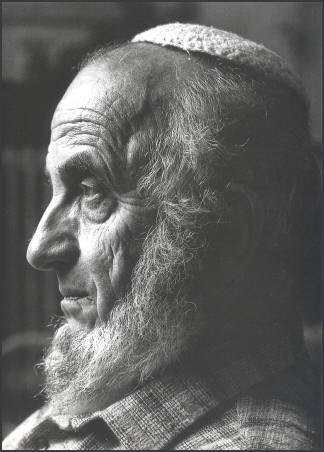 Emil Fackenheim supported the unhyphenated spelling, in order to "dispel the notion that there is an entity 'Semitism' which 'anti-Semitism' opposes. His most famous work is The Secrets of The Federal Reserve. Along with Nesta Webster, he is generally regarded as one of the most influential authors in the genre of conspiracism.
Emil Fackenheim supported the unhyphenated spelling, in order to "dispel the notion that there is an entity 'Semitism' which 'anti-Semitism' opposes. His most famous work is The Secrets of The Federal Reserve. Along with Nesta Webster, he is generally regarded as one of the most influential authors in the genre of conspiracism.
Eustace Clarence Mullins, Jr. was born in Roanoke, Virginia, the third child of Eustace Clarence Mullins (1899–1961) and his wife Jane Katherine Muse (1897–1971). His father was a salesman in a retail clothing store.
the third child of Eustace Clarence Mullins (1899–1961) and his wife Jane Katherine Muse (1897–1971). His father was a salesman in a retail clothing store.
Eustace Mullins was educated at Washington and Lee University, New York University, the University of North Dakota and the Institute of Contemporary Arts (Washington, D.C.)
In December 1942, at Charlottesville, Virginia he enlisted in the military as a Warrant Officer. He was a veteran of the United States Army Air Forces, with thirty-eight months active service during World War II.
he enlisted in the military as a Warrant Officer. He was a veteran of the United States Army Air Forces, with thirty-eight months active service during World War II.
Mullins frequently visited poet Ezra Pound during his period of incarceration in St. Elizabeths Hospital for the Mentally Ill
during his period of incarceration in St. Elizabeths Hospital for the Mentally Ill in Washington, D.C. between 1946 and 1959. According to Mullins it was Pound who set him on the course of research that led to his writing The Secrets of The Federal Reserve
in Washington, D.C. between 1946 and 1959. According to Mullins it was Pound who set him on the course of research that led to his writing The Secrets of The Federal Reserve
Mullins was a researcher at the Library of Congress in 1950 and worked with Senator Joseph McCarthy investigating Communist Party funding sources. He later stated that he believed McCarthy had "started to turn the tide against world communism". Shortly after his first book came out in 1952, he was discharged by the Library of Congress.
In the 1950s, Mullins wrote for Conde McGinley’s newspaper Common Sense, which promoted the second edition of his book on the Federal Reserve, entitled The Federal Reserve Conspiracy (1954). Around this time, he also wrote for Lyrl Clark Van Hyning's Chicago-based newsletter, Women's Voice. In 1995, he was writing for Criminal Politics. Around the end of his life, he would write for Willis Carto's magazine Barnes Review.
Mullins lived in Staunton,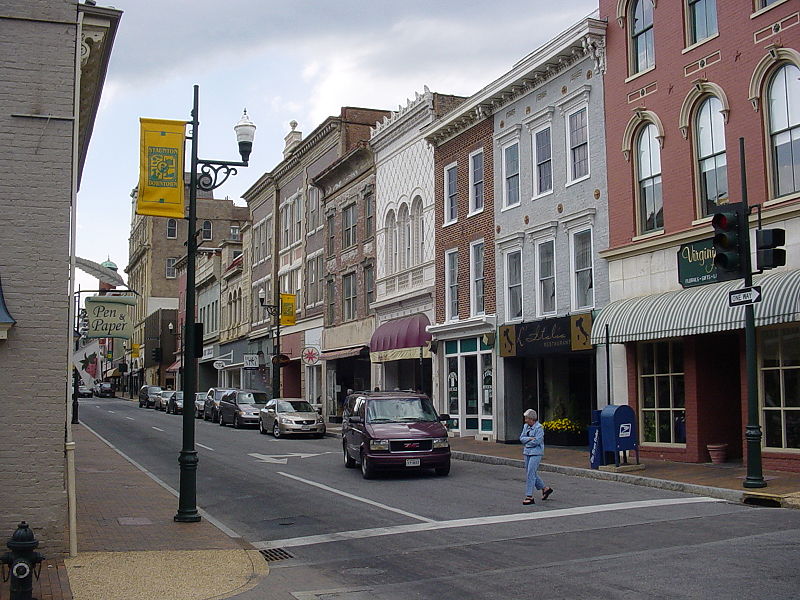 Virginia, in the house on Madison Place where he grew up, from the mid 1970s through the end of his life.
Virginia, in the house on Madison Place where he grew up, from the mid 1970s through the end of his life.
Eventually the book was published by two of Pound's disciples, John Kasper and David Horton, under the title Mullins on the Federal Reserve.
In Mullins on the Federal Reserve (1952), (the updated edition published in 1983 was called Secrets of the Federal Reserve) Mullins argued that there was a conspiracy among Paul Warburg, Edward Mandell House, Woodrow Wilson, J.P. Morgan, Benjamin Strong, Otto Kahn, the Rockefeller family, the Rothschild family, and other European and American bankers which resulted in the founding of the U.S. Federal Reserve System. He argued that the Federal Reserve Act of 1913 defies Article 1, Section 8, Paragraph 5 of the United States Constitution by creating a "central bank of issue" for the United States. Mullins went on to claim that World War I, the Agricultural Depression of 1920, the Great Depression of 1929 were brought about by international banking interests in order to profit from conflict and economic instability. Mullins also cited Thomas Jefferson's staunch opposition to the establishment of a central bank in the United States.
In the 1983 edition of his book, he argued that Kuhn, Loeb & Co. and the House of Morgan were fronts for the Rothschilds. In this edition, he also outlined how financial interests connected to the J. Henry Schroder Company and the Dulles brothers financed Adolf Hitler (in contrast to the claims of his mentor, Ezra Pound, that Hitler was a sovereign who was completely against the interests of international finance. He also alleged that the Rothschilds were world monopolists. He furthermore claimed that most of the stock of member banks that owned stock in the Federal Reserve was owned by City of London bankers, since they owned much of the stock of the member banks. He attempted to trace stock ownership, as it changed hands via mergers and acquisitions, from the inception of the Federal Reserve in 1913 to the early 1980s.
In the last chapter of the book, he noted various Congressional investigations, and criticized the immense degree of power that these few banks who owned majority shares in the Federal Reserve possessed. He also criticized the Bilderberg Group, attacking it as an international consortium produced by the Rockefeller-Rothschild alliance. In an appendix to the book, he delved further into the City of London, and criticized the Tavistock Institute of Human Relations, which he claimed helps to conduct psychological warfare on the citizens of Britain and the United States.No one deserves more credit than Dr. John Coleman for bringing to light the history and true purpose of the City of London's Tavistock Institute and its many subdivisional institutions and organizations which was exposed in stunning detail in his 1992 book, Conspirators' Hierachy - The Story of The Committee of 300. Dr Coleman has rightly complained that many NWO expose writers who have followed in his wake, have used his original research without crediting him as the originating source and in fairness to him, it should be observed that the information presented below is a reflection of his pioneering investigations into Tavistock.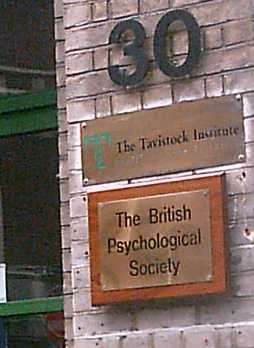
A central theme of Mullins' book is that the Federal Reserve allows bankers to monetize debt, creating it out of nothing by book entry, and thus they have enormous leverage over everyone else. Near the end of the book, he said of the Federal Reserve:
Mullins wrote a follow up to his work on the Federal Reserve in 1985, in a book called The World Order: A Study in the Hegemony of Parasitism, updated in 1992 as The World Order: Our Secret Rulers. He argued that the Federal Reserve and other central banks were tools of a "Rothschild World system", centered in the City of London, which extended its power through organizations like the Royal Institute of International Affairs, various foundations, corporate conglomerates, intelligence agencies, etc. He proposed that Nations were not really governing powers, but rather, that the world was parasitically controlled by this interlock of banks, foundations, and corporations, which acted as a unified force, tending towards World monopoly. He furthermore proposed that this oligarchical apparatus was controlled by corrupt, dynastic families that had accumulated their wealth through trade in gold, slaves, and drugs. He claimed that as this consortium furthered its monopolistic ambitions, it would seek the establishment of a World Culture, eradicate nationalism, impoverish everyone except themselves, and progressively turn the world into a police state.
In 1985, Mullins also wrote A Writ for Martyrs, in which he reproduced a large portion of his FBI file, which included a 1959 memo to J. Edgar Hoover from Alex Rosen, which suggested having Mullins forcibly committed for his political views. On this memo is a scribbled note from Hoover, saying the Mullins case was “top priority” and that FBI agents should “see that some action is taken.” It also produced facsimiles of his correspondence with the German and American governments regarding the burning of the German translation of his study of the Federal Reserve.
In 1988, Mullins wrote Murder by Injection, where he argued that much of the United States was controlled by the Rockefellers, and that the "medical monopoly" exercised a pernicious influence on American life, intentionally making people sick and deliberately introducing poisons, rather than healing people.
In 1989, Mullins wrote The Rape of Justice, where he argued that the United States legal system was fundamentally corrupt.
Many of Mullins' writings show a preoccupation with the idea that the Jews of the world are in a state of war with Christianity and Western civilization, and that Communism, Zionism, and International finance were Jewish tools to subjugate gentile populations. He also believed that in general the interaction between Jews and gentiles was parasitic. He believed that the Rockefellers were also parasitic,but that ultimately the World Order was controlled by Jews and that the end goal of this Jewish oligarchy is "World Zionism."
Mullins believed that the French Revolution and the Congress of Vienna were key events in which Jews, via conspiratorial machinations, overpowered Gentile governments He believed that other key moments in the establishment of Jewish power were the creation of the Federal Reserve, the Bolshevik Revolution, and the establishment of the state of Israel
Like Pound, he had sympathy for Fascism, because of its apparent anti-Usury and anti-Communist measures, though he later withdrew that sympathy, as he came to believe that without the Nazis, Zionism would never have been a powerful force, and that the Nazis were puppets of Jewish bankers, specifically Max Warburg,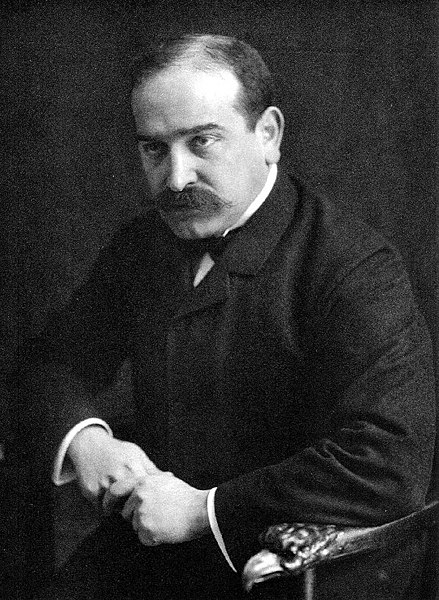 who he claimed financed them to build up the Nazi war machine, as well as the leaders of the J. Henry Schroeder Bank, who were facilitated by the Dulles brothers, and that Nazi opposition to these bankers, insofar as it went beyond rhetoric, occurred only well after they had ascended to power.
who he claimed financed them to build up the Nazi war machine, as well as the leaders of the J. Henry Schroeder Bank, who were facilitated by the Dulles brothers, and that Nazi opposition to these bankers, insofar as it went beyond rhetoric, occurred only well after they had ascended to power.
Max M. Warburg (5 June 1867 – 26 December 1946) was a German banker. He was a scion of the illustrious Warburg family of Altona. From 1910 until 1938, he was director of M. M. Warburg & Co. in Hamburg, Germany. Prior to his directing of the Warburg banking company, he developed apprenticeships in Frankfurt, Amsterdam, Paris, and London. As head of that firm, he advised Kaiser Wilhelm II to World War I.
to World War I.
His brother Paul Warburg was the chief architect of the Federal Reserve Board in the United States.
In the 1930s, despite the rise of the Nazi Party, Warburg felt there was hope for the future in Germany and tried to wait out the Nazi crisis. Beginning in 1933 he served on the board of the German Reichsbank under governor Hjalmar Schacht. He sold the bank because the 1935 Nuremberg laws set the framework and campaign of “Aryanization”. He then emigrated to the United States in 1938.
Max Warburg married Alice Magnus in 1899, and together they had four daughters and a son, Eric Warburg (1900—1990), founder of E.M. Warburg & Co, later known as Warburg Pincus.
In his book Secrets of the Federal Reserve, he also claimed that World War One was contrived and managed by a triumvirate consisting of Paul Warburg , Bernard Baruch,
, Bernard Baruch, Eugene Meyer
Eugene Meyer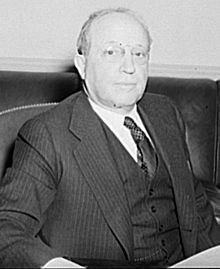 , and to a lesser extent, the leaders of Morgan banks, in the United States, and men like Max Warburg in Germany, so that they might increase their profit and power. He also claimed that these individuals would play a key role in financing the Bolshevik Revolution.
, and to a lesser extent, the leaders of Morgan banks, in the United States, and men like Max Warburg in Germany, so that they might increase their profit and power. He also claimed that these individuals would play a key role in financing the Bolshevik Revolution.
His October, 1952 article "Adolf Hitler: An Appreciation" was mentioned in a report by the House Un-American Activities Committee. In it, he espoused anti-Semitic views and expressed the belief that America owes a debt to Hitler.
In a tract called The Secret Holocaust, Mullins stated that the account of the Nazi extermination of the Jews is implausible, and that it is a cover story for the Soviet massacres of Christians, which he believed was led by a conspiracy of "international Jews" and instigated for the purpose of killing Gentiles.
In 1968, Mullins authored the tract, The Biological Jew, which he claimed was an objective analysis of the forces behind the "decline" of Western Culture. He claimed that the main influence that people were overlooking in their analysis of world affairs was "parasitism". He began by describing parasitism in the animal kingdom. He then commented on the work of the macro-historians Oswald Spengler and Arnold Toynbee (who he said was a ripoff of Spengler and a "shabbez-goi historian"), and proposed that if we look at society as if it were an organism, then the Jews would be equivalent to parasites overtaking that organism. He states that Jews "instinctively" want to control the world. He spent the rest of the book attacking Americans for their supposed docility and subservience to the Jews, and predicting that America would be in total cultural decline by the 1980s.
and Arnold Toynbee (who he said was a ripoff of Spengler and a "shabbez-goi historian"), and proposed that if we look at society as if it were an organism, then the Jews would be equivalent to parasites overtaking that organism. He states that Jews "instinctively" want to control the world. He spent the rest of the book attacking Americans for their supposed docility and subservience to the Jews, and predicting that America would be in total cultural decline by the 1980s.
Michael Barkun describes Mullins' 1992 work The New World Order: Our Secret Rulers as "a more openly anti-Semitic version of the Illuminati theory". He writes:
 in January 2010, Mullins suffered a stroke. He died on February 2, 2010, aged 86, in Hockley, Texas.
in January 2010, Mullins suffered a stroke. He died on February 2, 2010, aged 86, in Hockley, Texas.
Eustace Clarence Mullins, Jr.
 (March 9, 1923 – February 2, 2010) was a populist American political writer, biographer, and antisemite.Antisemitism (also spelled anti-semitism or anti-Semitism) is suspicion of, hatred toward, or discrimination against Jews for reasons connected to their Jewish heritage. Social scientists consider it a form of racism. In a 2005 U.S. governmental report, antisemitism is defined as "hatred toward Jews—individually and as a group—that can be attributed to the Jewish religion and/or ethnicity."
(March 9, 1923 – February 2, 2010) was a populist American political writer, biographer, and antisemite.Antisemitism (also spelled anti-semitism or anti-Semitism) is suspicion of, hatred toward, or discrimination against Jews for reasons connected to their Jewish heritage. Social scientists consider it a form of racism. In a 2005 U.S. governmental report, antisemitism is defined as "hatred toward Jews—individually and as a group—that can be attributed to the Jewish religion and/or ethnicity."A person who holds such views is called an "antisemite". Antisemitism may be manifested in many ways, ranging from expressions of hatred of or discrimination against individual Jews to organized violent attacks by mobs, state police, or even military attacks on entire Jewish communities.
Extreme instances of persecution include the pogroms which preceded the First Crusade in 1096, the expulsion from England in 1290, the massacres of Spanish Jews
 in 1391, the persecutions of the Spanish Inquisition, the expulsion from Spain in 1492, Cossack massacres in Ukraine, various pogroms in Russia, the Dreyfus affair
in 1391, the persecutions of the Spanish Inquisition, the expulsion from Spain in 1492, Cossack massacres in Ukraine, various pogroms in Russia, the Dreyfus affair , the Final Solution by Hitler's Germany, official Soviet anti-Jewish policies and the Jewish exodus from Arab and Muslim countries.
, the Final Solution by Hitler's Germany, official Soviet anti-Jewish policies and the Jewish exodus from Arab and Muslim countries.
Despite the use of the prefix anti-, the terms Semitic and anti-Semitic are not directly opposed to each other. Antisemitism refers specifically to prejudice against Jews alone and in general, despite the fact that there are other speakers of Semitic languages (e.g. Arabs, Ethiopians, or Assyrians) and that not all Jews speak a Semitic language.
The term anti-Semitic has been used on occasion to include bigotry against other Semitic-language peoples such as Arabs, but such usage is not widely accepted.
Both terms anti-Semitism and antisemitism are in common use. Some scholars favor the unhyphenated form antisemitism to avoid possible confusion involving whether the term refers specifically to Jews, or to Semitic-language speakers as a whole. For example,
 Emil Fackenheim supported the unhyphenated spelling, in order to "dispel the notion that there is an entity 'Semitism' which 'anti-Semitism' opposes. His most famous work is The Secrets of The Federal Reserve. Along with Nesta Webster, he is generally regarded as one of the most influential authors in the genre of conspiracism.
Emil Fackenheim supported the unhyphenated spelling, in order to "dispel the notion that there is an entity 'Semitism' which 'anti-Semitism' opposes. His most famous work is The Secrets of The Federal Reserve. Along with Nesta Webster, he is generally regarded as one of the most influential authors in the genre of conspiracism. the third child of Eustace Clarence Mullins (1899–1961) and his wife Jane Katherine Muse (1897–1971). His father was a salesman in a retail clothing store.
the third child of Eustace Clarence Mullins (1899–1961) and his wife Jane Katherine Muse (1897–1971). His father was a salesman in a retail clothing store.Eustace Mullins was educated at Washington and Lee University, New York University, the University of North Dakota and the Institute of Contemporary Arts (Washington, D.C.)
In December 1942, at Charlottesville, Virginia
 he enlisted in the military as a Warrant Officer. He was a veteran of the United States Army Air Forces, with thirty-eight months active service during World War II.
he enlisted in the military as a Warrant Officer. He was a veteran of the United States Army Air Forces, with thirty-eight months active service during World War II.Mullins frequently visited poet Ezra Pound
 during his period of incarceration in St. Elizabeths Hospital for the Mentally Ill
during his period of incarceration in St. Elizabeths Hospital for the Mentally Ill in Washington, D.C. between 1946 and 1959. According to Mullins it was Pound who set him on the course of research that led to his writing The Secrets of The Federal Reserve
in Washington, D.C. between 1946 and 1959. According to Mullins it was Pound who set him on the course of research that led to his writing The Secrets of The Federal ReserveMullins was a researcher at the Library of Congress in 1950 and worked with Senator Joseph McCarthy investigating Communist Party funding sources. He later stated that he believed McCarthy had "started to turn the tide against world communism". Shortly after his first book came out in 1952, he was discharged by the Library of Congress.
In the 1950s, Mullins wrote for Conde McGinley’s newspaper Common Sense, which promoted the second edition of his book on the Federal Reserve, entitled The Federal Reserve Conspiracy (1954). Around this time, he also wrote for Lyrl Clark Van Hyning's Chicago-based newsletter, Women's Voice. In 1995, he was writing for Criminal Politics. Around the end of his life, he would write for Willis Carto's magazine Barnes Review.
Mullins lived in Staunton,
 Virginia, in the house on Madison Place where he grew up, from the mid 1970s through the end of his life.
Virginia, in the house on Madison Place where he grew up, from the mid 1970s through the end of his life.In his Foreword to The Secrets of the Federal Reserve Mullins explains the circumstances by which he came to write his now famous investigation into the origins of the Federal Reserve System:
-
- In 1949, while I was visiting Ezra Pound who was a political prisoner at St. Elizabeth’s Hospital, Washington, D.C.
- (a Federal institution for the insane), Dr. Pound asked me if I had ever heard of the Federal Reserve System. I replied that I had not, as of the age of 25. He then showed me a ten dollar bill marked "Federal Reserve Note" and asked me if I would do some research at the Library of Congress on the Federal Reserve System which had issued this bill. Pound was unable to go to the Library himself, as he was being held without trial as a political prisoner by the United States government. After he was denied broadcasting time in the U.S., Dr. Pound broadcast from Italy in an effort to persuade people of the United States not to enter World War II. Franklin D. Roosevelt had personally ordered Pound’s indictment..
- In 1949, while I was visiting Ezra Pound who was a political prisoner at St. Elizabeth’s Hospital, Washington, D.C.
-
- Pound offered to supplement my income by ten dollars a week for a few weeks. My initial research revealed evidence of an international banking group which had secretly planned the writing of the Federal Reserve Act and Congress’ enactment of the plan into law. These findings confirmed what Pound had long suspected. He said, "You must work on it as a detective story."
Eventually the book was published by two of Pound's disciples, John Kasper and David Horton, under the title Mullins on the Federal Reserve.
In Mullins on the Federal Reserve (1952), (the updated edition published in 1983 was called Secrets of the Federal Reserve) Mullins argued that there was a conspiracy among Paul Warburg, Edward Mandell House, Woodrow Wilson, J.P. Morgan, Benjamin Strong, Otto Kahn, the Rockefeller family, the Rothschild family, and other European and American bankers which resulted in the founding of the U.S. Federal Reserve System. He argued that the Federal Reserve Act of 1913 defies Article 1, Section 8, Paragraph 5 of the United States Constitution by creating a "central bank of issue" for the United States. Mullins went on to claim that World War I, the Agricultural Depression of 1920, the Great Depression of 1929 were brought about by international banking interests in order to profit from conflict and economic instability. Mullins also cited Thomas Jefferson's staunch opposition to the establishment of a central bank in the United States.
In the 1983 edition of his book, he argued that Kuhn, Loeb & Co. and the House of Morgan were fronts for the Rothschilds. In this edition, he also outlined how financial interests connected to the J. Henry Schroder Company and the Dulles brothers financed Adolf Hitler (in contrast to the claims of his mentor, Ezra Pound, that Hitler was a sovereign who was completely against the interests of international finance. He also alleged that the Rothschilds were world monopolists. He furthermore claimed that most of the stock of member banks that owned stock in the Federal Reserve was owned by City of London bankers, since they owned much of the stock of the member banks. He attempted to trace stock ownership, as it changed hands via mergers and acquisitions, from the inception of the Federal Reserve in 1913 to the early 1980s.
In the last chapter of the book, he noted various Congressional investigations, and criticized the immense degree of power that these few banks who owned majority shares in the Federal Reserve possessed. He also criticized the Bilderberg Group, attacking it as an international consortium produced by the Rockefeller-Rothschild alliance. In an appendix to the book, he delved further into the City of London, and criticized the Tavistock Institute of Human Relations, which he claimed helps to conduct psychological warfare on the citizens of Britain and the United States.No one deserves more credit than Dr. John Coleman for bringing to light the history and true purpose of the City of London's Tavistock Institute and its many subdivisional institutions and organizations which was exposed in stunning detail in his 1992 book, Conspirators' Hierachy - The Story of The Committee of 300. Dr Coleman has rightly complained that many NWO expose writers who have followed in his wake, have used his original research without crediting him as the originating source and in fairness to him, it should be observed that the information presented below is a reflection of his pioneering investigations into Tavistock.

A central theme of Mullins' book is that the Federal Reserve allows bankers to monetize debt, creating it out of nothing by book entry, and thus they have enormous leverage over everyone else. Near the end of the book, he said of the Federal Reserve:

Eustace Mullins dedicated Secrets of the Federal Reserve to George Stimpson and Ezra Pound.The Federal Reserve System is not Federal; it has no reserves; and it is not a system, but rather, a criminal syndicate. It is the product of criminal syndicalist activity of an international consortium of dynastic families comprising what the author terms "The World Order". The Federal Reserve system is a central bank operating in the United States. Although the student will find no such definition of a central bank in the textbooks of any university, the author has defined a central bank as follows: It is the dominant financial power of the country which harbors it. It is entirely private-owned, although it seeks to give the appearance of a governmental institution. It has the right to print and issue money, the traditional prerogative of monarchs. It is set up to provide financing for wars. It functions as a money monopoly having total power over all the money and credit of the people.
Mullins wrote a follow up to his work on the Federal Reserve in 1985, in a book called The World Order: A Study in the Hegemony of Parasitism, updated in 1992 as The World Order: Our Secret Rulers. He argued that the Federal Reserve and other central banks were tools of a "Rothschild World system", centered in the City of London, which extended its power through organizations like the Royal Institute of International Affairs, various foundations, corporate conglomerates, intelligence agencies, etc. He proposed that Nations were not really governing powers, but rather, that the world was parasitically controlled by this interlock of banks, foundations, and corporations, which acted as a unified force, tending towards World monopoly. He furthermore proposed that this oligarchical apparatus was controlled by corrupt, dynastic families that had accumulated their wealth through trade in gold, slaves, and drugs. He claimed that as this consortium furthered its monopolistic ambitions, it would seek the establishment of a World Culture, eradicate nationalism, impoverish everyone except themselves, and progressively turn the world into a police state.
In 1985, Mullins also wrote A Writ for Martyrs, in which he reproduced a large portion of his FBI file, which included a 1959 memo to J. Edgar Hoover from Alex Rosen, which suggested having Mullins forcibly committed for his political views. On this memo is a scribbled note from Hoover, saying the Mullins case was “top priority” and that FBI agents should “see that some action is taken.” It also produced facsimiles of his correspondence with the German and American governments regarding the burning of the German translation of his study of the Federal Reserve.
In 1988, Mullins wrote Murder by Injection, where he argued that much of the United States was controlled by the Rockefellers, and that the "medical monopoly" exercised a pernicious influence on American life, intentionally making people sick and deliberately introducing poisons, rather than healing people.
In 1989, Mullins wrote The Rape of Justice, where he argued that the United States legal system was fundamentally corrupt.
Mullins believed that the French Revolution and the Congress of Vienna were key events in which Jews, via conspiratorial machinations, overpowered Gentile governments He believed that other key moments in the establishment of Jewish power were the creation of the Federal Reserve, the Bolshevik Revolution, and the establishment of the state of Israel
Like Pound, he had sympathy for Fascism, because of its apparent anti-Usury and anti-Communist measures, though he later withdrew that sympathy, as he came to believe that without the Nazis, Zionism would never have been a powerful force, and that the Nazis were puppets of Jewish bankers, specifically Max Warburg,
 who he claimed financed them to build up the Nazi war machine, as well as the leaders of the J. Henry Schroeder Bank, who were facilitated by the Dulles brothers, and that Nazi opposition to these bankers, insofar as it went beyond rhetoric, occurred only well after they had ascended to power.
who he claimed financed them to build up the Nazi war machine, as well as the leaders of the J. Henry Schroeder Bank, who were facilitated by the Dulles brothers, and that Nazi opposition to these bankers, insofar as it went beyond rhetoric, occurred only well after they had ascended to power.Max M. Warburg (5 June 1867 – 26 December 1946) was a German banker. He was a scion of the illustrious Warburg family of Altona. From 1910 until 1938, he was director of M. M. Warburg & Co. in Hamburg, Germany. Prior to his directing of the Warburg banking company, he developed apprenticeships in Frankfurt, Amsterdam, Paris, and London. As head of that firm, he advised Kaiser Wilhelm II
 to World War I.
to World War I.His brother Paul Warburg was the chief architect of the Federal Reserve Board in the United States.
In the 1930s, despite the rise of the Nazi Party, Warburg felt there was hope for the future in Germany and tried to wait out the Nazi crisis. Beginning in 1933 he served on the board of the German Reichsbank under governor Hjalmar Schacht. He sold the bank because the 1935 Nuremberg laws set the framework and campaign of “Aryanization”. He then emigrated to the United States in 1938.
Max Warburg married Alice Magnus in 1899, and together they had four daughters and a son, Eric Warburg (1900—1990), founder of E.M. Warburg & Co, later known as Warburg Pincus.
In his book Secrets of the Federal Reserve, he also claimed that World War One was contrived and managed by a triumvirate consisting of Paul Warburg
 , Bernard Baruch,
, Bernard Baruch, Eugene Meyer
Eugene Meyer , and to a lesser extent, the leaders of Morgan banks, in the United States, and men like Max Warburg in Germany, so that they might increase their profit and power. He also claimed that these individuals would play a key role in financing the Bolshevik Revolution.
, and to a lesser extent, the leaders of Morgan banks, in the United States, and men like Max Warburg in Germany, so that they might increase their profit and power. He also claimed that these individuals would play a key role in financing the Bolshevik Revolution.
His October, 1952 article "Adolf Hitler: An Appreciation" was mentioned in a report by the House Un-American Activities Committee. In it, he espoused anti-Semitic views and expressed the belief that America owes a debt to Hitler.
In a tract called The Secret Holocaust, Mullins stated that the account of the Nazi extermination of the Jews is implausible, and that it is a cover story for the Soviet massacres of Christians, which he believed was led by a conspiracy of "international Jews" and instigated for the purpose of killing Gentiles.
In 1968, Mullins authored the tract, The Biological Jew, which he claimed was an objective analysis of the forces behind the "decline" of Western Culture. He claimed that the main influence that people were overlooking in their analysis of world affairs was "parasitism". He began by describing parasitism in the animal kingdom. He then commented on the work of the macro-historians Oswald Spengler
 and Arnold Toynbee (who he said was a ripoff of Spengler and a "shabbez-goi historian"), and proposed that if we look at society as if it were an organism, then the Jews would be equivalent to parasites overtaking that organism. He states that Jews "instinctively" want to control the world. He spent the rest of the book attacking Americans for their supposed docility and subservience to the Jews, and predicting that America would be in total cultural decline by the 1980s.
and Arnold Toynbee (who he said was a ripoff of Spengler and a "shabbez-goi historian"), and proposed that if we look at society as if it were an organism, then the Jews would be equivalent to parasites overtaking that organism. He states that Jews "instinctively" want to control the world. He spent the rest of the book attacking Americans for their supposed docility and subservience to the Jews, and predicting that America would be in total cultural decline by the 1980s.Michael Barkun describes Mullins' 1992 work The New World Order: Our Secret Rulers as "a more openly anti-Semitic version of the Illuminati theory". He writes:
Like his mentor [Ezra Pound], Mullins sees the world's evil as a product of financial manipulation, in which Jews play a central role. But as an explanation of world, as opposed to modern, history, his conspiracist vision makes the Illuminati merely a link in a much longer change that extends back to the ancient Near East and forward to the nascent communist movement of the early Marx. Weishaupt himself is portrayed as a mere figurehead... Mullins sees the Illuminati as really run by Jews..."
While on a speaking tour in Columbus, Ohio
 in January 2010, Mullins suffered a stroke. He died on February 2, 2010, aged 86, in Hockley, Texas.
in January 2010, Mullins suffered a stroke. He died on February 2, 2010, aged 86, in Hockley, Texas.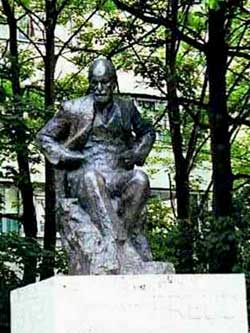
No comments:
Post a Comment